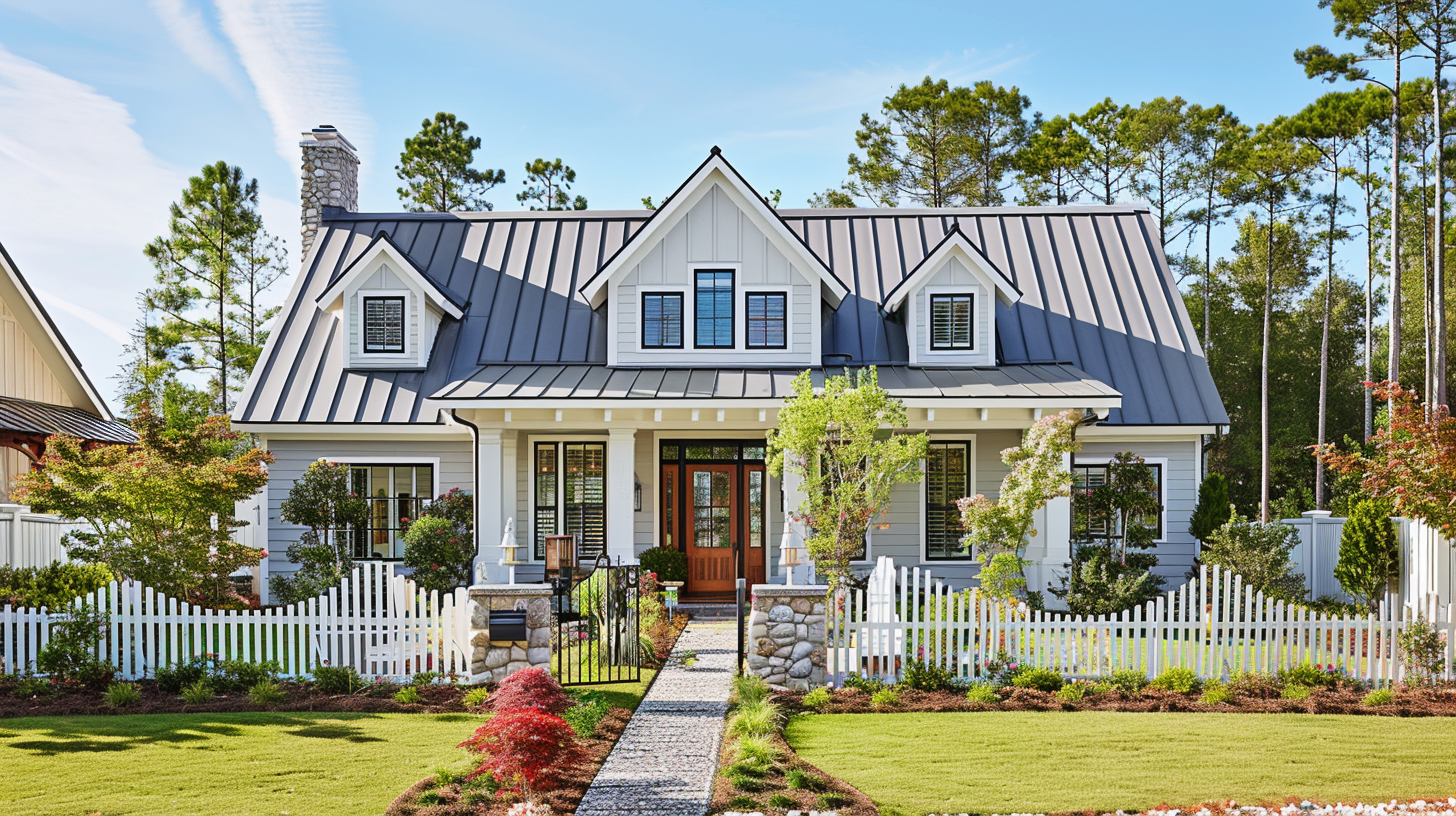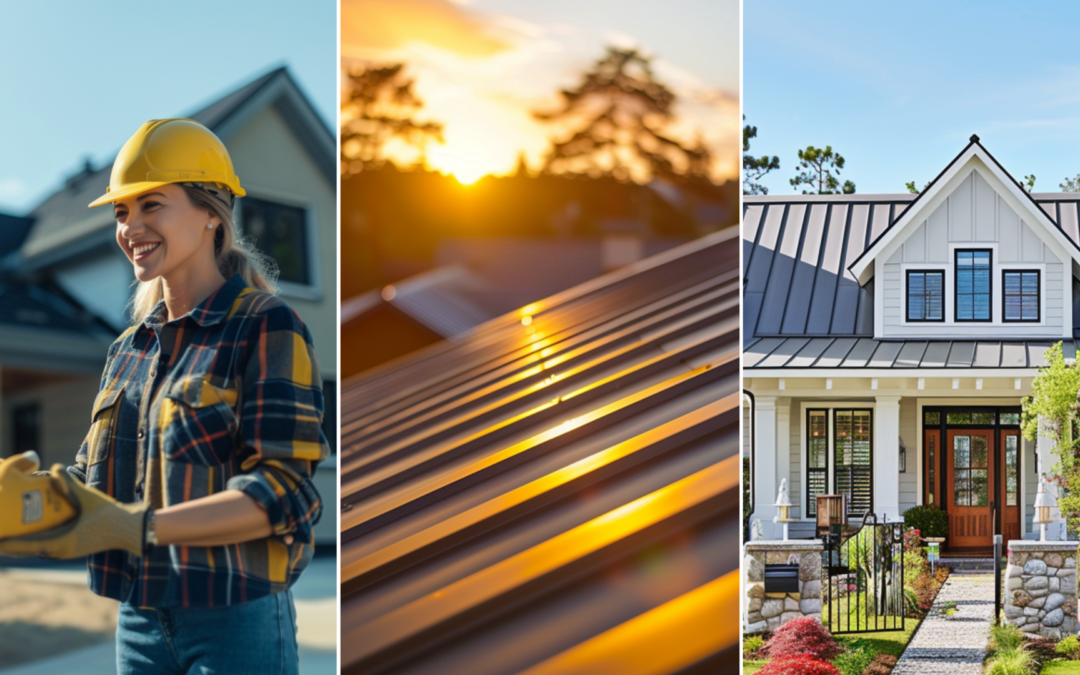Understanding Cost Per Square Foot in Roofing Renovation
Cost per square foot is crucial when planning a roofing renovation project. This metric allows homeowners and contractors to assess the financial implications of their projects and make informed decisions regarding materials, labor, and budgeting. By examining the cost per square foot, individuals can better understand the benefits and advantages of various roofing options, such as asphalt shingles, metal roofs, or clay tiles. Moreover, understanding cost per square foot enables homeowners to compare quotes from contractors and suppliers and determine the most cost-effective solution.
Why Cost Per Square Foot Matters in Roofing Renovation
The cost per square foot in roofing renovation is crucial for several reasons:
- It allows homeowners or business owners to gauge the project’s average cost, helping them set a realistic budget for the renovation. By clearly understanding the price per square foot, individuals can avoid unexpected expenses and ensure they have enough financial resources to complete the project efficiently.
- Considering the cost per square foot helps individuals weigh their options and make informed decisions. They can compare different roofing materials or contractors based on their price per square foot, ensuring they get the best value for their investment.
- Understanding the importance of cost per square foot helps individuals plan effectively.
They can consider factors such as the size of the roof and the desired materials, enabling them to make accurate estimations and plan their renovation timeline accordingly.
Factors Affecting Cost Per Square Foot in Roofing Projects
When planning a roofing renovation project, it is essential to consider the cost per square foot. Several factors can influence this cost, which is crucial for making informed decisions. The roof size is one factor that directly affects the cost per square foot. Larger roofs require more materials, labor, and time, resulting in higher costs. Additionally, the type of roofing material chosen significantly determines the cost per square foot. Different materials have different price ranges, with premium materials often being more expensive. The complexity of the roof’s design and structure is another critical factor. Roofs with intricate designs or multiple angles can require more work and skilled labor, increasing the overall cost.
Moreover, the existing roof’s condition can impact the cost per square foot. If extensive repairs or modifications are needed before the new roof can be installed, it can drive up the expenses. By considering these factors and carefully analyzing the cost per square foot, individuals can make informed decisions and ensure they stay within their budget for their roofing renovation project.

Cost Per Square Foot - Type and Quality of Roofing Materials - Sky Roofing Construction & Remodeling
Type and Quality of Roofing Materials
One of the most commonly used materials is asphalt shingles, which are affordable and easy to install. They provide decent durability and are available in various styles and colors. However, they may have a different aesthetic appeal than other materials and require more frequent maintenance.
Stainless steel roofing is known for its exceptional strength and durability. It is resistant to corrosion, fire, and extreme weather conditions. While it may be more expensive than asphalt shingles, it offers a longer lifespan, low maintenance, and a modern look.
Slate roofs are renowned for their elegance and long-lasting quality. They are highly durable, fire-resistant, and able to withstand extreme weather. However, slate is expensive and may be heavier than other options, requiring additional structural support.
Concrete tiles are famous for their versatility, durability, and relatively low cost. They come in various shapes, sizes, and colors, allowing for customization. Concrete roofs are also fire-resistant and require minimal maintenance.
EPDM roofing, or ethylene propylene diene monomer, is a synthetic rubber material commonly used in commercial buildings. It is highly durable and resistant to UV rays, high temperatures, and impacts. EPDM roofs are also easy to install and require very little maintenance.
Wood shingles or shakes offer a unique and natural aesthetic appeal. They are eco-friendly and provide decent insulation. However, they require regular maintenance to prevent rot, pests, and fire hazards.
Roof Size and Complexity
Roof size and complexity are critical factors that impact the cost and materials required for a roof replacement. The size of a roof directly influences the amount of materials needed, as larger roofs require more shingles or other roofing materials. Additionally, larger roofs often involve more labor and time, increasing the project’s overall cost. Moreover, roof complexity, including features like walls, valleys, chimneys, flat roof sections, and dormers, requires extra materials and skilled labor for proper installation. These elements increase the project’s complexity, making it more time-consuming and potentially expensive. Therefore, when planning a roofing renovation, it is crucial to consider factors such as roof size, complexity, signs of damage, structural repairs, and the choice of roofing material, including prevalent types of shingles, seam metal panels for flat roofing materials, and any potential extra costs for structural damage.
Labor and Installation Costs
Several factors influence labor and installation costs for roofing projects. The first factor is the ongoing labor shortage, which has resulted in a limited number of skilled workers available for roofing projects. This shortage drives up the cost of labor, as skilled workers are in high demand. Additionally, allocating materials, labor, and overhead costs impacts the overall cost per square foot. Materials such as shingles, underlayment, and flashing contribute to the material costs. Labor costs include the time and effort required for roof repair and installation, while overhead costs encompass expenses like insurance and administrative fees. Considering these factors and the average labor rates for roof installation is crucial in estimating the cost per square foot for roofing renovation projects. By being aware of these elements, homeowners and contractors can make informed decisions when planning a roofing renovation, ensuring they account for roof pitches, roofing warranty, gutter replacement, hiring a reputable roofer, and budgeting appropriately.
Benefits of Calculating Roofing Costs Per Square Foot
Calculating the cost per square foot for a roofing renovation project can benefit homeowners and businesses. By determining the cost per square foot, individuals can better understand the overall expenses involved in their project, including the roof replacement cost, allowing them to plan and budget more effectively. This information is precious for those working with a limited budget or who want to ensure that their renovation costs align with market averages and the average price of similar projects. Additionally, knowing the cost per square foot can help individuals compare and evaluate different roofing options or professional roofers to choose the most cost-effective and reliable solution for their needs, whether they have steep or flat roofs. Ultimately, calculating the cost per square foot empowers individuals to make informed decisions, avoid unexpected financial surprises, and ensure a successful and well-managed roofing renovation project for their entire roof.

Cost Per Square Foot - Accurate Budget Planning - Sky Roofing Construction & Remodeling
Accurate Budget Planning for Roofing Projects
When planning a roofing project, accurate budget planning is of utmost importance. Obtaining detailed estimates, contracts, and warranties is crucial before any work begins to ensure financial transparency. By doing so, homeowners can clearly understand the costs involved and avoid unexpected expenses. Additionally, being wary of hiring companies solely based on the cheapest quotes is essential. While it may seem like a cost-saving approach, potential risks are involved. Companies offering extremely low quotes may compromise the quality of materials, leading to subpar results and even more expenses in the long run. Therefore, it is essential to carefully consider any roofing company’s reputation and track record before deciding. By prioritizing accurate budget planning and avoiding the temptation of the cheapest quotes, homeowners can ultimately ensure a successful and cost-effective roofing renovation project.
Easier Comparison of Roofing Material Options
These options include basic asphalt shingles, seam metal roofs, tile roofs, and slate. Asphalt shingles are popular due to their low cost and decent durability, making them suitable for various climates. Metal roofing is more expensive upfront but offers exceptional durability, energy efficiency, and suitability for extreme weather conditions. Clay tiles are known for their aesthetic appeal and long lifespan, although they can be costly and heavy. Slate is a premium option with excellent durability and appearance, but it is the most expensive choice. Additionally, common roofing materials such as wood shakes and asphalt shingle roofs offer a variety of benefits depending on the specific needs and preferences of the homeowner. When considering roof material, it is essential to weigh the costs, durability, and aesthetic appeal to make an informed decision.
Enhanced Transparency in Project Estimations
Using a cost-per-square-foot approach in a roof replacement project provides homeowners with clear and straightforward project estimates. This method allows for better budgeting and financial planning by helping to avoid hidden fees and unexpected costs. By knowing the cost per square foot, homeowners can easily calculate the overall average roof replacement cost of the project based on the size of their roof, including considerations for complex roofs. Enhanced transparency in project estimations is crucial in building trust between contractors and clients. It promotes openness between both parties, ensuring no surprises or unexpected expenses during the renovation process. This transparency contributes to the overall success and satisfaction of the roofing renovation project, as homeowners can make informed decisions based on the estimated cost per square foot, including specific factors like the metal roof cost. By considering the cost per square foot, homeowners can have peace of mind and confidently move forward with their roofing renovation, knowing the costs involved.

Cost Per Square Foot - Tips for Managing Roofing Renovation - Sky Roofing Construction & Remodeling
Tips for Managing Roofing Renovation Costs Per Square Foot
Managing costs per square foot is necessary when planning a roofing renovation project. Homeowners can make informed decisions and effectively manage their budget by understanding the factors influencing the price per square foot, including heavier materials. These tips will help homeowners make intelligent decisions during roofing renovation, from understanding the project cost to exploring cost-saving measures. Whether choosing suitable materials or working with trusted contractors, implementing these strategies can lead to a successful, cost-effective, aesthetically pleasing roofing renovation project. Additionally, considering roof replacement estimates and whether a partial roof replacement might be a more affordable option can further help in planning and budgeting for the project.
Comparing Quotes from Multiple Contractors
Several key factors should be considered when comparing quotes from multiple contractors for a roofing renovation project:
- It is essential to thoroughly review and compare the quotes based on materials used, labor costs, and additional fees or charges.
- Obtaining at least three estimates from licensed roofing contractors is crucial. This will help you better understand the average cost and scope of the project and identify any outliers.
- Researching and reading reviews about the contractors is essential to ensure their credibility and reputation.
Furthermore, choosing insured and bonded companies with 5+ years of experience is significant as it assures in the event of any damages or accidents during the project. Lastly, obtaining a detailed written estimate, contract, and warranty from the chosen contractor before work begins is essential. This ensures transparency and protects both parties involved. By considering these factors and following the necessary steps, one can make an informed decision when comparing quotes from multiple contractors for a roofing renovation.
Prioritizing Essential Roofing Upgrades
Prioritizing essential roofing upgrades ensures your roof’s overall condition and longevity. These upgrades should address signs or indicators of necessary improvements, such as missing shingles, moss or algae growth, leaks or water stains, deteriorating materials, soft spots, roof slopes, and shingle degeneration. These signs are crucial in identifying areas of concern that require immediate attention. By prioritizing these upgrades, homeowners can prevent further damage and costly repairs. It is essential to address these issues promptly to avoid structural problems and potential leaks leading to water damage and mold growth. Considering the cost per square foot for roofing renovations, roof inspection, and roof repair costs, it is essential to properly plan and allocate resources for these critical upgrades. Prioritizing these crucial roofing upgrades will not only prolong the lifespan of your roof but also protect your home from potential damage.
Choosing Quality Roofing with Sky Roofing Construction & Remodeling
Understanding cost per square foot is essential when planning your roofing renovation project. It clarifies budgeting and helps you select the best materials for your needs. Whether you’re considering durable asphalt shingles, sleek metal roofs, or classic clay tiles, knowing this metric ensures you make informed decisions. Contact Sky Roofing Construction & Remodeling (https://skyroofingconstructiontx.com) at (210) 942-9797 for expert guidance and top-notch installation services. Schedule your consultation today to confidently and reliably transform your vision into reality.
Tasha Davis is a knowledgeable contributor to Sky Roofing Construction & Remodeling, with a specialty in roofing project management and customer service excellence. Tasha’s experience in overseeing large-scale roofing projects ensures that her writing is both practical and customer-focused, providing homeowners with tips on navigating the roofing process smoothly and ensuring their satisfaction from start to finish.

